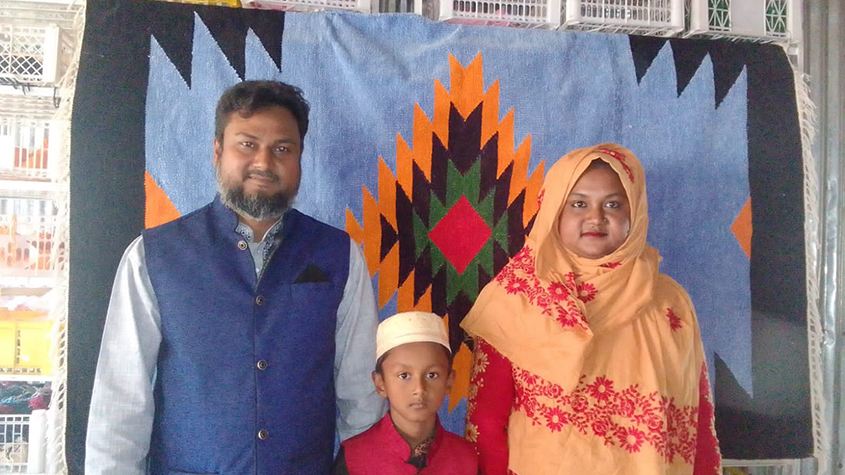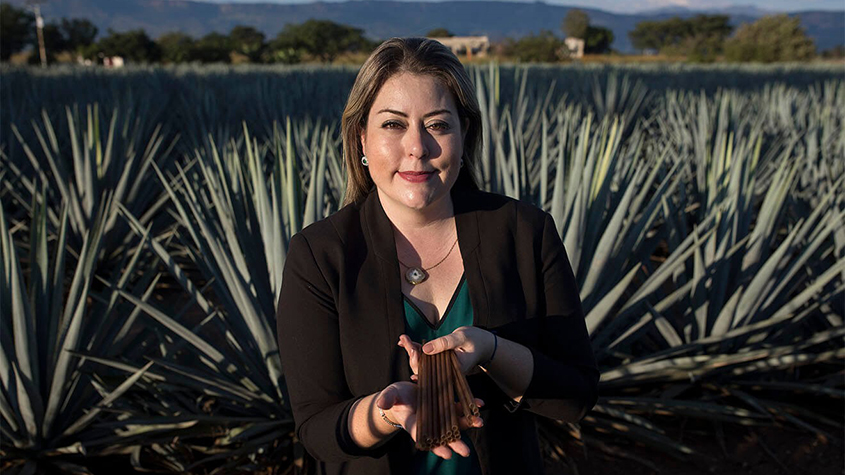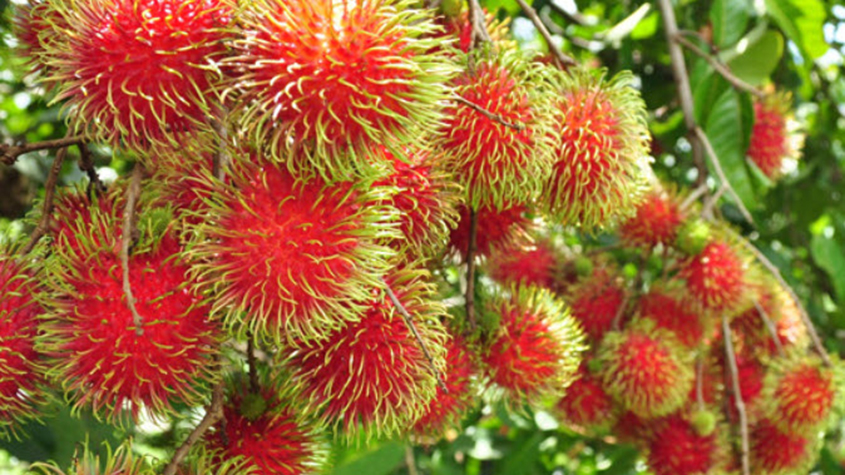Unión de Artesanos Olinca, A.C., Mexico
Olinala is a largely rural region of the state of Guerrero, in the southwest of the United Mexican States (Mexico). Etymologically of Indian origin, the area derives its name from the Nahuatle (Aztecan) word ollinallan – which means “place of movement” – and is located five hours away by road from the country’s capital of Mexico City.

Traversed by straight streets reminiscent of 16th century European Renaissance towns, the region has been the center of a rich mix of indigenous people such as the Nahuas, Mixtecs, Amuzgos and others including those of African and European origin.
Inspired by its varied and fertile heritage, for generations Olinala has had a burgeoning cottage industry (production in the home instead of a factory) of intricately made and beautifully crafted maque goods (or lacquered wood products) for everyday use. Such products have included chests, folding screens, painted gourds and small boxes.
In support of this illustrious culture and industry (which was historically family-run in small, independent units), the residents of Olinala have joined hands with the Mexican government and others to create a cooperative of craftsmen and women.
Established in 1993, the Unión de Artesanos Olinca, A.C (UAO) is a cooperative that has been able to unite the voices and skills of Olinala crafts workers into one body. At the same time, UAO has lobbied both the local and national government in Mexico on behalf of its members, and coordinate efforts to manage the community’s entry into the local and international lacquered goods markets.
Partly due to the cooperative's activities, the market access of Olinala’s artists has been greatly improved and the socio-economic well-being of this culturally rich but historically marginalized community has been systematically developed.
Traditional knowledge
Dating back to a time before Spanish influence in Mexico in 1521, the artesania (or popular handicrafts) of Olinala has benefited from a mixture of traditional cultural expression (TCEs) and traditional knowledge (TK). Passed down from one generation to another, the crafts of the region are replete with themes and motifs ranging from flowers, foliages, landscapes and animals (including rabbits, foxes, jaguars, cats and deer based on Nahuatl mythology) depicted in colorful, unique patterns either on carved wood products or gourds.
Indeed, Olinala’s renowned products are made by a long and painstaking process (involving up to 29 separate steps) of carving, painting and the application of lacquer (a resin for varnishing derived from certain plants and insects).
During the manufacturing process of Olinala products, the wood is smeared with vegetable or insect oils before being covered in a thick paste that is made of raw materials based on minerals called tecoztle in the Nahuatl language. This paste has a sand-like texture, is yellowish in color and is mixed with oils from the seeds of the Mexican chia plant (salvia hispanica lamiaceae; a flowering plant in the mint family) or flaxseed (linum usitatissimum linaceae, a flowering plant).
When spread over the wood’s surface, the paste forms the base for the next step in the process which involves a mixture of tesicalte (a hard white stone collected from Huamuxtitlan, a village in Guerrero) and is ground in a stone container known as a tlalmetate until it becomes a very fine powder. The powder is added to the color that will become the artifact’s background and the resulting mixture is smeared onto the wood using a deer’s tail brush.
Following this step, the wood is polished until virtually all of the tesicalte vanishes. The base color is added therafter and left to dry for a couple of days before adding lacquer and giving polish. Applying lacquer to such goods protects its surface and provides the opportunity for further decoration.

Olinala inspired products can be divided into three main styles: embutido (inlaying), dorado (painting, sometimes called aplicado) and rayado (carving).
Created by the artist laying down a design before elements of the pattern are cut out and the grooves are filled with color, embitudo is popular in Olinala and the western state of Michoacan.
Named after the gold leaf historically used to sketch its decorations, dorado, meanwhile, is a style popular in Gurerro and Chiapas, the southernmost state in Mexico. This style is distinguishable by the use of additional colors when applied onto a base coat to create vivid floral patterns or recreate nostalgic or patriotic scenes from Mexican history and mythology.
More subtle than dorado, rayado, furthermore, is popular in Guerrero and is based on a second color being applied over the base coat to create floral patterns, often in combination with animal themes and geometric shapes.
While the colored mixture is still wet, a turkey feather quill has traditionally been used in this style of handicraft to highlight certain details such as the petals of flowers. Such designs are often depicted in red or blue on white, black on red, or red with a black background.
Contemporary artists sometimes use pastel colors and have been known to create white-on-white artesania. Lacquer manufacturing (traditionally prepared by women) and carving (traditionally an activity for men) is usually done in collaboration between members of a household.
Olinala artists have often cultivated a highly individual style based on the inspiration of a single person or household. Because the products were rarely signed with the maker’s name, it has been easy to adopt or adapt the creations freely within the community.
The artesania craftsman, moreover, was historically not only the creator and purveyor of such goods; he or she was directly in charge of the entire process – from inception, to creation, to commercialization.
Whilst this process of autonomous, individual, and unbranded creation worked satisfactorily for established artists, it did not support lesser known artisans who found it increasingly difficult to beat off competition from cheaper, poor quality or imitation products.
Via UAO, and through other collective initiatives both locally and nationally, struggling artisans have sought new ways to exploit their TK and TCEs in a collective and systematic way while entering the market with quality and distinguishable goods.
Goods with specific geographical origin
All the key ingredients and products from Olinala, which stands at 1,600 meters above sea level and represents the highest point in the state, are sourced from the Guerrero region itself.
Bounded by the Pacific Ocean and traversed by the Balsas, Tlapaneco and Mezcala Rivers, the state covers about 24,819 square miles (64,281 square kilometers), including the fertile valleys of the Sierra Madre de Sur, and has a rich offering of human and natural resources.
Not only well known for its lacquer making and rich cultural mix, Guerrero is also renowned for its agriculture, mining and tourism (based on a majestic environment). Some of the state’s most significant flora has been the deciduous tree forests that occur naturally in the region.
Growing up to 7 – 8 meters (m) high, bursera aloexylon (the Aloe tree) is a plant endemic to the area that has thrived in its temperate climate (which is mainly warm and dry) with an annual average rainfall of between 780 millimeters (mm) to 1,000 mm, and monthly maximum and minimum temperatures that vary between 22 degrees centigrade (°C) and 30°C.

The Aloe tree provides a naturally scented wood, resin and oil extract – called linaloe or Olinaloe wood – that has traditionally been used by craftsmen and women in Olinala as a key material for their handicraft industry.
Indeed, since the mid-19th century, essential oils from linaloe have been processed for domestic use and exportation to the European and American perfumes markets. Aloe trees have subsequently provided the wood from which most of Olinala’s traditional products are crafted.
The region’s beautifully made gourds, moreover, are sourced from the fruit of the locally available jicara tree (genus crescentia) and vines (genus lagenaria). Other important and locally procured materials for Olinala crafts are oils and earthen pigments (extracted from deposits near Olinala and softly heated before being ground to a powder), bird feathers and deer tails.
As one local artisan said, “All my materials come from the [surrounding] mountain. I make my own chia oil, which hardly anybody else uses anymore [...] I have to work like my father and grandfather before me.”
In order to maximize the potential of these naturally occurring and local assets, the artisans have exploited their geographical heritage and culture in a bid to launch quality, distinguishable goods into a competitive and international lacquered products market.
Appellations of origin
To secure an AO for Olinana crafts, UAO has worked with the government of Mexico and several other organizations including the Instituto Nacional Indigena (INI) – an organization that supports indigenous people’s rights – and the Fondo Nacional Para El Fomento De Las Artesanias (FONART) – a nationwide organization that advocates for Mexican artisans.
By enacting the Law for the Promotion and Protection of Industrial Property in 1991 (the 1991 Law, which included AOs), moreover, the Mexican government recognized a need to promote the country’s heritage and businesses while protecting its producers from unfair competition.

Shortly thereafter, in 1993, UAO craftsmen applied for an AO for Olinala at the Instituto Mexicano de la Propiedad Industrial (IMPI) – Mexico’s IP office.
Having been declared in IMPI’s Official Federation Gazette in 1994, the AO was thereafter registered with the International System of Appellations of Origins (1995) managed by the World Intellectual Property Organization (WIPO).
The Olinala AO certificate can be granted to all artists within the municipality who meet the strict standards of quality and production procedures set by UAO members and the Official Mexican Standards (NOMS) for AOs.
In accordance with the 1991 Law, applicants for an AO have to provide evidence that satisfies NOMS criteria (which are set by the Secretariat of the Economy, a department of the Mexican government) and must undergo certification, verification and monitoring for compliance with these standards (as determined by teams of Certification Authorities).
Since granting Olinala’s AO, artists in the municipality that meet the certificate’s standards have been able to improve the quality of their products, differentiate these goods from those of competitors and counterfeiters and confidently enter the local, national and international market.
Branding and commercialization
Following decades of wide-spread indifference, Olinala artists have become increasingly aware of the need for branding their products either with their own names, with the Olinala AO certification, or with both, in order to successfully enter the market with distinguishable goods.
The collective IP certification has been employed to overcome three potentially economically debilitating conditions that the region’s artists have long endured: geographical remoteness; fierce individualism; and, limited access to the market.
Because the municipality is located on rural highlands with previously poor access routes (Olinala used to be approximately nine hours away by car from major centers of commerce such as Mexico City), Olinala artisans found it difficult to bring their often fragile products to trade centers.
Historically, traditional transportation methods were unreliable and based on a risky three-day-trip through the mountains in Olinala to Mexico City by human and animal carriers. Being remote and relying on inefficient transportation adversely affected producers’ access to centers of business.
Olinala’s artists had also developed a notorious reputation for individualism. This meant that collective efforts at commercialization were difficult to initiate and most successes were limited to a few, isolated artisans.
The upshot of these limiting conditions was increased costs and lowered profits for the majority of the municipality’s artists.
From the 1960s and 70s onward, however, efforts were made to improve and change these factors by various organizations including INI, FONART and other rural development agencies and consultants.

Based on a successful initiative to help woven palm artisans from La Montana (a region in Guerrero) to scale up production and successfully market their goods through collective efforts, INI collaborated with experts in international development in order to improve access to the region. The initiative, moreover, implemented training schemes for Olinala’s artisans in up-to-date commercialization, distribution and cooperative business methods and principles.
One of the first innovations taken in this regard was to improve access routes to major centers such as Mexico City so that the artisans could transfer goods efficiently and begin to increase their target market to the national and international spheres.
To achieve these aims, INI and MNAIP began to coordinate light-aircraft trips between Onilala and cities such as Cuautla, 58 kilometers north-northeast of Mexico City, which helped craftsmen bring their goods quickly to regional markets with plenty of eager consumers.
Indeed, what had been a process that took weeks for the artists – including journeying through the mountains – was reduced to a 25 minutes flight. These aircrafts proved to be a major improvement to transportation systems in the region. Due to their high cost, however, only well-established artisans have been able to afford it.
Soon thereafter, more cost-effective measures (a new, paved highway connecting Guerrero to other major areas including Mexico City) were introduced into the region based on government funding and support from FONART and others. Coupled with the introduction of high-wheeled lorries and busses into the area, Olinala artisans were finally able to bring their products to a growing market in a cost-effective manner.
With improved access to local and regional markets, Olinala’s craftsmen were not only able to take their products via intermediaries to regional commercialization centers with high consumer footfall (including tourists).
They were also able to gain access to international markets – especially to the European Union (EU) and the United States of America (USA) – via networks of international buyers and family members who were living abroad.
As access to various markets improved and costs dropped, annual artesania sales from the region grew to approximately US$10 million.

For various reasons including the relatively haphazard nature of these improvements (many artists did not have access to international private buyers nor family members living abroad), market access and success was unequal and some artisans succeeded better than others.
Since the establishment of UAO and the granting of Olinala’s AO, the region’s craftsmen have worked with the government in the state of Guerrero and others in order to create more systematic development policies.
Through this approach, the partners planned to guarantee protections for the municipality’s craftsmen and their products; provide a stable economic climate with incentives for the production of quality wares; and promote a more uniform access to the market.
The local government in Olinala has, for example, improved the consistency of access to credit facilities which artists can apply for in order to invest in raising production standards to meet those set out by the cooperative and the municipality’s AO.
Moreover, once a particular artisan is certified to meet the standards of AO certification, he or she has been able to able to display its mark on the product and commercialize it with confidence while reassuring customers of its authenticity.
The Guerrero government, moreover, has worked with UAO members in joint product-awareness-raising campaigns including co-sponsoring trade fairs both regionally and nationally. Between July and August 2011, for instance, the state of Guerrero launched a major international product promotion and commercialization exposition in Mexico City – called “Guerrero: Flor y Color” (Flor y Color) – in the Benito Juarez International airport, the country’s largest and busiest airport.
Situated in one of the airport’s exhibition halls, over 100 artists from the region introduced their products (including pottery, textiles, jewelry and the famous Olinala lacquered boxes) to an international clientele including thousands of visiting tourists. Backed by the Olinala AO, the Flor y Color exhibition has been able to reassure visitors and customers of the products’ cultural and geographical origin and quality.
Furthermore, having suffered in the past from an uncertain economic environment based on fluctuations in prices, UAO has worked with FONART in order to ensure some stability to the industry.
Via a series of licensing agreements with FONART owned boutiques around the country (including six that are based in Mexico City), Olinala craftsmen and women have been able to commercialize their products – at an agreed price – to a wide variety of local and international customers.
Through state level assistance and in collaborations with other agencies, therefore, UAO and its craftsmen have exploited the municipality’s AO, developed greater market access routes, and stabilized the economic environment in the industry in order to successfully and confidently commercialize their goods.
Environment
With the success and increase in demand for Olinala’s wood products, there has been increased pressure on the region’s vital natural resources. Indeed, since the early part of the 20th century, distillation of linaloe oils had intensified and, coupled to unregulated deforestation in the area, there was a steady decline (which peaked in the 1930s) in the region’s Aloe trees.

Following a drop in deforestation in the state of Guerrero during the Second World War, the Mexican Forest Service enacted measures intended to protect the state’s vital but depleted trees. However, as local enforcement of these laws were unsystematic (due, in part, to a lack of resources for enforcement agencies or education of locals regarding proper conservation methods), deforestation continued apace.
By the late 1970s and early1980s, the government of Mexico and other agencies had come to realize that a more proactive approach was needed in order to ensure the resources upon which the country’s marginalized communities depended. Established by the Mexican government in 1977, the Coordinación General del Plan Nacional de Zonas Deprimidas y Grupos Marginales was an organ of state that worked with marginalized communities in an effort to safeguard their socio-economic and natural resources.
Furthermore, in 1997, the government launched a nationwide program of Conservation of Wildlife and Product Diversification in the Rural Sector (the Diversification Program). The Diversification Program was intended to sustainably reduce the impact of traditional arts on the Aloe tree (without entirely destroying the traditions) by using alternative materials (such as pinewood) in the production of Olinala’s handicrafts.
Having learned the lessons from previous conservation mistakes, there has been a concerted effort in the country to preserve not only the nation’s human heritage but also the natural resources upon which so much of its future depends.
To this end, Mexico’s National Ecology Institute, the National Autonomous University, and the Council for Nahua Villages of the Upper Balsas in Guerrero have begun a monitoring program for endangered trees in the region – including the Aloe tree – that are used by its artisans. The AO designation for Olinala, which acknowledges the municipality’s reliance on its natural resources, is part of a strategy to ensure that environmental considerations are at the heart of the region’s development agenda.
Business results
Since the establishment of UAO and the AO declaration for Olinala, there has been a steady improvement in the socio-economic and environmental condition of the traditionally marginalized municipality. On its stable climb to a successful future, the region has been the recipient of awards and recognition for its TCEs, TK and crafts industry.

The Mexican government, for instance, presented the artisans of Olinala with the National Arts and Sciences Award in the category of Popular and Traditional Arts (1993). The community’s geographical isolation and problems with market access, moreover, have improved since the construction of a new road linking Olinala to the nearest main highway in the state of Guerrero.
Further strides have been made to improve the local infrastructure including implementation of modern communications networks such as phone lines and Internet access via the municipal office. Indeed, not only is trade in Olinala artesania expanding locally; it has grown and reached the national and international market.
Olinala crafts hold pride of place in FONART’s showrooms in Mexico City (where they are displayed and sold at the famous street Avenida de la Reforma) and in other locations within the city such as the commercial center called of Mercado Artesanias la Ciudadela. These products (including jewelry chests) have become the crowning jewel of prestigious venues including the interior décor of major institutions such as the Intercontinental hotel in Mexico City.
Furthermore, due to increased international demand for such wares, Olinala artists have tailored their creations to suit increasingly high end European (German), North American (the USA) and East Asian (including Japan and South Korean) tastes and motifs.
Not only producing high end products for international and wealthy clients, the region’s artists continue to diversify their product range and price while maintaining their traditionally high quality. Inexpensive Olinala wares include a wide variety of everyday objects such as children’s toys, mid-range products such as food trays, and top end products such as tables that can be purchased in local markets, urban stores and international airports.
Olinala craftwork, therefore, has brought progress and the prospect of a bright future to a historically marginalized mountain community with a rich cultural and natural heritage. The revived industry has led to greater market access for its craftsmen and modern infrastructure and communications for the municipality’s inhabitants. As a result, the lacquered crafts industry in Olinala has accounted for 80% of the region’s economy.
The art and craft of progress
For generations, the indigenous community of Olinala crafted beautiful lacquered ornaments and objects for everyday use made of wood or gourds. Traditionally based in small family units in an isolated region, the community discovered a common ownership in their cultural and geographic heritage, built local, national and international commercial networks, and set about reviving their economy while preserving their environment and culture.
With the declaration of an appellation of origin for Olinala, a new upsurge of traditional pride has been inspired and the doors to economic progress have been opened.



